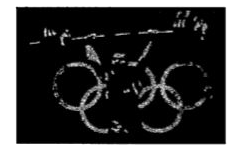During a weight - lifting routine, an athlete calculates the totla amount of weight moved while performing a certain exercise by multiplying the amount of weight per lift by the number of lifts. On Wednesday, the weight per lift was 20 percent greater than the weight per lift on Monday, while the number of lifts was 25 percent fewer than the number of lifts performed on Monday. On Friday, the weight per lift was 25 percent greater than the weight per lift on Wednesday, while the number of lifts was 40 percent fewer than the number of lifts performed on Wednesday. The total weight moved by the athlete while performing the exercise on Monday was approximately what percent greater than the total weight she moves while performing the exercise on Friday ?
15%
33%
48%
50%
The correct Answer is:C
To solve the problem step by step, we will define the variables and calculate the total weight moved on Monday and Friday, then find the percentage difference.
Step 1: Define Variables
Let:
- Weight per lift on Monday = W
- Number of lifts on Monday = N
Step 2: Calculate Weight and Lifts on Wednesday
On Wednesday:
- Weight per lift = W+20% of W=W+0.2W=1.2W
- Number of lifts = N−25% of N=N−0.25N=0.75N
Step 3: Calculate Total Weight Moved on Monday
Total weight moved on Monday = Weight per lift × Number of lifts
Total weight on Monday=W×N=WN
Step 4: Calculate Weight and Lifts on Friday
On Friday:
- Weight per lift = 1.2W+25% of 1.2W=1.2W+0.25×1.2W=1.2W+0.3W=1.5W
- Number of lifts = 0.75N−40% of 0.75N=0.75N−0.4×0.75N=0.75N−0.3N=0.45N
Step 5: Calculate Total Weight Moved on Friday
Total weight moved on Friday = Weight per lift × Number of lifts
Total weight on Friday=1.5W×0.45N=0.675WN
Step 6: Calculate the Difference in Total Weight Moved
Difference in total weight moved = Total weight on Monday - Total weight on Friday
Difference=WN−0.675WN=0.325WN
Step 7: Calculate the Percentage Difference
To find what percent greater the total weight moved on Monday is compared to Friday:
Percentage=(DifferenceTotal weight on Friday)×100
Percentage=(0.325WN0.675WN)×100
Percentage=(0.3250.675)×100≈48.15%
Final Answer
The total weight moved by the athlete while performing the exercise on Monday is approximately 48.15% greater than the total weight moved on Friday.
Let:
- Weight per lift on Monday = W
- Number of lifts on Monday = N
On Wednesday:
- Weight per lift = W+20% of W=W+0.2W=1.2W
- Number of lifts = N−25% of N=N−0.25N=0.75N
Total weight moved on Monday = Weight per lift × Number of lifts
Total weight on Monday=W×N=WN
On Friday:
- Weight per lift = 1.2W+25% of 1.2W=1.2W+0.25×1.2W=1.2W+0.3W=1.5W
- Number of lifts = 0.75N−40% of 0.75N=0.75N−0.4×0.75N=0.75N−0.3N=0.45N
Total weight moved on Friday = Weight per lift × Number of lifts
Total weight on Friday=1.5W×0.45N=0.675WN
Difference in total weight moved = Total weight on Monday - Total weight on Friday
Difference=WN−0.675WN=0.325WN
To find what percent greater the total weight moved on Monday is compared to Friday:
Percentage=(DifferenceTotal weight on Friday)×100
Percentage=(0.325WN0.675WN)×100
Percentage=(0.3250.675)×100≈48.15%
The total weight moved by the athlete while performing the exercise on Monday is approximately 48.15% greater than the total weight moved on Friday.
Topper's Solved these Questions
- MISCELLANEOUS TOPICS Book:KAPLANChapter:MISCELLANEOUS TOPICS Exercise:MISCELLANEOUS TOPICS FOLLOW - UP TEST
Explore 12 Videos
- MATH TEST-01Book:KAPLANChapter:MATH TEST-01Exercise:Multiple Choice Question
Explore 20 Videos
- PLANE GEOMETRY Book:KAPLANChapter:PLANE GEOMETRY Exercise:PLANE GEOMETRY FOLLOW - UP TEST
Explore 6 Videos
Similar Questions
A lift is accelerated upward Will the apparent weight of a person inside the lift increase , decrease or remain the same relative to its real weight ? If the lift is going with unifrom speed then ?
View SolutionA lift carries a person with a weighting machine in it, up and then down with the same constant acceleration. The weights recorded by the machine in the two cases are in the ratio 5:3. The acceleation of the lift is
View Solution
Knowledge Check
A weight lifter lifts a weight off the ground and holds is up, then
Awork is done in lifting as well as holding the weight.Bno work is done in both lifting and holding the weight.Cwork is done in lifting the weight but no work is required to done in holding it up.Dno work is done in lifting the weight but work is required to be done in holding it up.A weight lifter lifts a load of 250N while a coolie lifts same load on his head. If the height of weight lifter and coolie is same, compare the work done?

 AWork done is sameBwork done by coolie is moreCwork done by weight lifter is moreDnone of the above
AWork done is sameBwork done by coolie is moreCwork done by weight lifter is moreDnone of the above
The work that must be done in lifting a body of weight P from the surface of the earth to a height h is
View SolutionA lift is going up. The variation in the speed of the lift is as given in the graph in the graph. What is the height to which the lift takes the passengers ?

View SolutionWhen a body is thrown up in a lift with a velocity u relative to the lift, the time of flight is found to be t. The acceleration with which the lift is moving up is
View SolutionA block is hanging in a lift as shown in figure. If lift is falling freely then time period of block is
_PHY_E06_329_Q01.png)
View SolutionIt is easier to lift a heavy stone under water than in air. Explain.
View SolutionStatement A : When a person is on the floor of a lift which is at rest, the resultant force on him is equal to his weight
Statement B : When the lift is moving with uniform velocity, then the apparent weight of the man is zero
View Solution